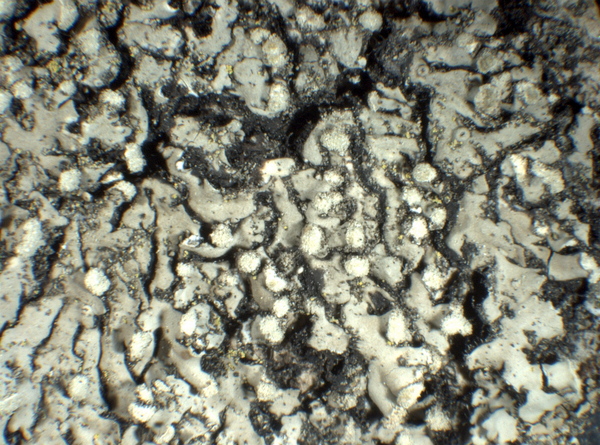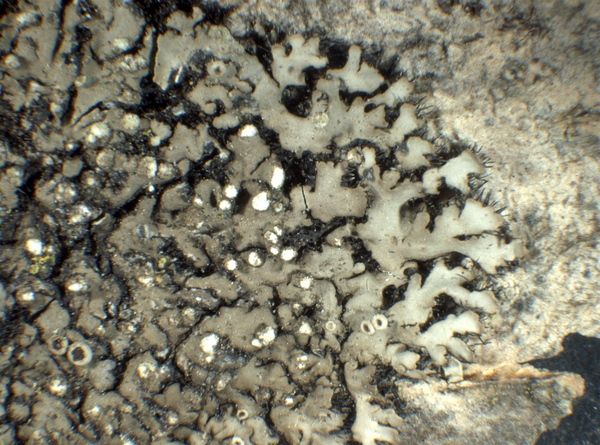Phaeophyscia pusilloides (Zahlbr.) Essl.
Mycotaxon, 7: 313, 1978. Basionym: Physcia pusilloides Zahlbr. - Cat. Lich. Univ., 7: 678, 1931.
Synonyms: Physcia pusilla Mereschk.; Physcia suzai Nádv.
Distribution: N - VG (Carvalho 1997), Frl (Tretiach & Molaro 2007), Ven (Nascimbene 2008c, Nascimbene & Marini 2010), TAA (Nascimbene & al. 2021, 2022), Lomb (Rivellini 1994, Arosio & al. 2003), Piem (Isocrono & al. 2005b, Matteucci & al. 2010), VA (Isocrono & Ongaro 2021, Ravera & al. 2021b, Ongaro & al. 2022), Lig (Giordani & Brunialti 2000, Giordani & Incerti 2008, Giordani & al. 2025). C - Tosc (Monaci & al. 1997), Marc (Nimis & Tretiach 1999), Laz (Zucconi & al. 2013), Abr (Nimis & Tretiach 1999, Caporale & al. 2016), Mol (Nimis & Tretiach 1999, Caporale & al. 2008, Paoli & al. 2015), Sar (Rizzi & al. 2011, Di Nuzzo & al. 2022). S - Pugl (Nimis & Tretiach 1999), Bas (Nimis & Tretiach 1999), Cal (Puntillo 1996).
Description: Thallus foliose, heteromerous, dorsiventral, narrow-lobed, forming orbicular to irregular, up to 2(-3) cm wide rosettes. Lobes elongate and discrete to partly imbricate, 0.3-1(-1.5) mm wide, flat, grey to grey-brown, epruinose, the main lobes branching into short lateral lobes bearing capitate, substipitate soralia at the tips. Lower surface black, with simple, black rhizines. Upper and lower cortex paraplectenchymatous; medulla white. Apothecia rare, lecanorine, to 3 mm across, the thalline margin sometimes with a corona of dark rhizines. Epithecium brown; hymenium and hypothecium colourless; paraphyses slender, often forked in upper part, the apical cells clavate, with a thin dark cap. Asci 8-spored, clavate, the K/I+ blue tholus penetrated by a faintly amyloid apical cushion with parallel or diverging flanks, the wall K/I-, surrounded by a K/I+ blue outer layer, Lecanora-type. Ascospores 1-septate, brown, ellipsoid, 18-23(-25) x 7-11 µm, uniformly thick-walled, Physcia-type. Pycnidia immersed. Conidia ellipsoid. Photobiont chlorococcoid. Spot tests: all negative. Chemistry: without lichen substances. Note: a temperate species found on isolated deciduous trees with nutrient-rich bark, especially Juglans and Fraxinus in montane valleys, absent from urban areas, somehow less frequent in semi-natural stands; often confused, in the past, with other species. The record from Rome by Munzi & al. (2007) needs confirmation.
Growth form: Foliose, narrow lobed
Substrata: bark
Photobiont: green algae other than Trentepohlia
Reproductive strategy: mainly asexual, by soredia, or soredia-like structures (e.g. blastidia)
Commonnes-rarity: (info)
Alpine belt: absent
Subalpine belt: absent
Oromediterranean belt: absent
Montane belt: extremely rare
Submediterranean belt: very rare
Padanian area: absent
Humid submediterranean belt: rare
Humid mediterranean belt: absent
Dry mediterranean belt: absent
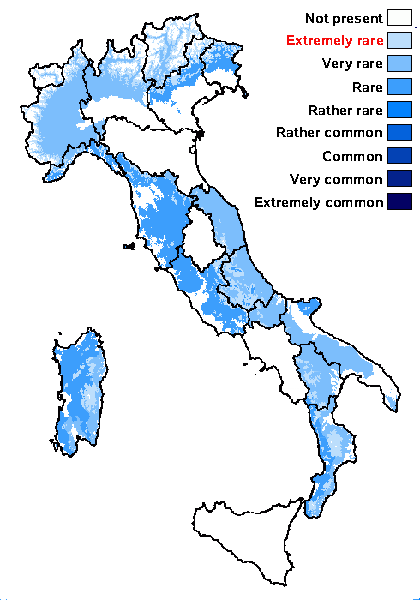
Predictive model
Herbarium samples
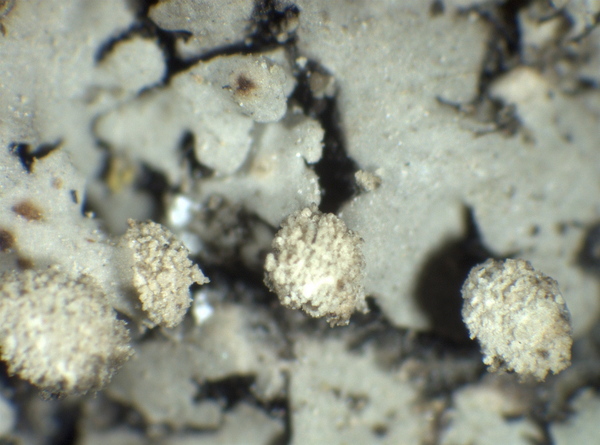

P.L.Nimis; Owner: Department of Life Sciences, University of Trieste
Herbarium: TSB (12318)
2008.03.03
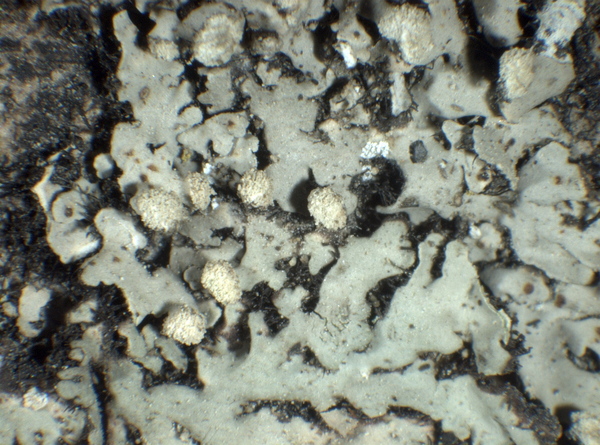

P.L.Nimis; Owner: Department of Life Sciences, University of Trieste
Herbarium: TSB (12318)
2008.03.03
Growth form: Foliose, narrow lobed
Substrata: bark
Photobiont: green algae other than Trentepohlia
Reproductive strategy: mainly asexual, by soredia, or soredia-like structures (e.g. blastidia)
Commonnes-rarity: (info)
Alpine belt: absent
Subalpine belt: absent
Oromediterranean belt: absent
Montane belt: extremely rare
Submediterranean belt: very rare
Padanian area: absent
Humid submediterranean belt: rare
Humid mediterranean belt: absent
Dry mediterranean belt: absent

Predictive model
| Herbarium samples |


P.L.Nimis; Owner: Department of Life Sciences, University of Trieste
Herbarium: TSB (12318)
2008.03.03


 INDEX FUNGORUM
INDEX FUNGORUM
 GBIF
GBIF
 DOLICHENS
DOLICHENS
